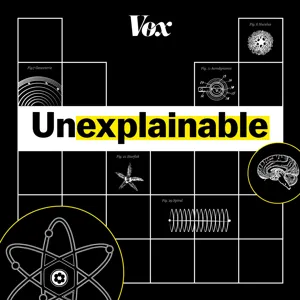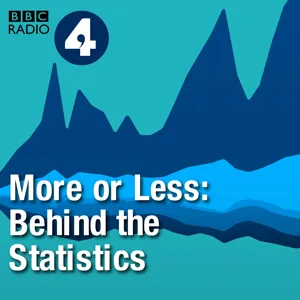Podcast Summary
Challenges and pitfalls in obesity research and public health measures: Renowned expert Allison emphasizes the importance of scientific rigor, integrity, and clear communication in obesity research, acknowledging potential confounding of science and advocacy, and suggesting that perceived lack of credibility may not be a failure of the scientific method but rather a communication issue.
Allison, a renowned expert in obesity and nutrition with over 500 scientific publications and numerous awards, discussed the challenges and pitfalls in the field of obesity research and public health measures. He emphasized the need for scientific rigor and integrity, as well as the potential confounding of science and advocacy. Allison also offered insights into the current state of science and its perceived lack of credibility, suggesting that the issue may not be with the scientific method itself but rather with the way it is communicated and perceived in the context of advocacy. Overall, this conversation provides valuable insights into the complexities of obesity research and the importance of maintaining a clear and logical perspective in the pursuit of knowledge.
Exploring obesity with intellectual curiosity: Renowned obesity researcher, Dr. Barzilai, approaches his field with a scientific, evidence-based perspective, emphasizing the importance of treating obesity research like any other scientific discipline
Dr. Barzilai, a renowned obesity researcher, approaches his field with intellectual curiosity and a lack of emotion, despite the loaded nature of the topic. His background in psychology and statistical analysis has shaped his evidence-based perspective, leading him to question assumptions and seek solid data. He became interested in obesity research during his graduate studies, driven by a desire to understand the complexities of the condition using scientific methods. Dr. Barzilai emphasizes the importance of treating obesity research like any other scientific field, applying the same laws of probability, physics, and mathematics to better understand the underlying causes and potential solutions.
From individual causes to environmental factors in obesity research: Obesity research has evolved from focusing on individual causes to recognizing the impact of environmental factors, particularly a toxic food environment, on obesity rates.
The study of obesity and its causes has evolved significantly over the years. The speaker, who was introduced to the subject in the late 80s during her undergraduate studies at Vassar College, was fascinated by the work of psychologist Stanley Schachter and his external theory of obesity. At the time, obesity was not a major public health concern, and the medical and political views towards it were different. However, as the 90s approached, obesity rates began to rise dramatically, leading to a shift in perspective. The focus moved from individual causes to environmental factors, with the recognition that a toxic food environment plays a significant role in obesity. This shift was driven in part by data from the National Health Nutrition Examination Survey (NHANES) and the work of researchers like Kelly Brownell, who advocated for a more preventative approach to childhood obesity. Overall, the study of obesity has shown that there is no one-size-fits-all solution, and that a multi-faceted approach is necessary to understand and address this complex issue.
The Causes of Obesity: A Complex Issue: The causes of obesity are complex and likely involve a combination of genetic, environmental, and behavioral factors, requiring rigorous research for accurate understanding.
The obesity epidemic was initially viewed as an environmental, social, and political problem, which led to increased funding and attention. However, this shift also brought less rigorous research and more opinion and advocacy. Before the 1990s and the introduction of large-scale studies like NHANES 3, the belief about the cause of obesity was unclear and often attributed to behavioral factors such as overeating. However, the thinking was sloppy, and it's important to note that behavior is inherently linked to biology. While there is evidence of a genetic component, such as selective breeding of animals, the exact causes of obesity are complex and likely involve a combination of genetic, environmental, and behavioral factors.
Genetic component of obesity in identical twins: Identical twins' BMI shows strong genetic correlation, with evidence dating back to 1923, but effective and sustainable treatments for obesity remain elusive.
The correlation between identical twins' Body Mass Index (BMI) is nearly the same, whether they were reared together or separated at birth. This high degree of concordance suggests a significant genetic component to obesity. However, it took several decades for this understanding to emerge in the scientific community. Early hints of the genetic component were present in studies as early as 1923, but it wasn't until the 1980s, with the high-quality twin and adoption studies from Sweden and Denmark, that the genetic component became clear. Despite this knowledge, the focus on obesity treatment remained on behavioral interventions such as counseling, reducing energy intake, and developing tools to help people do so. It wasn't until the early 1990s that pharmaceutical interventions began to be explored, with the introduction of fenfluramine and phentermine (Fenfen), which unfortunately had dangerous side effects for a small subset of people. Overall, the scientific understanding of the genetic component of obesity has evolved significantly over the past century, but effective and sustainable treatments continue to be a challenge.
The Fenfen era: A turning point in obesity treatment history: The Fenfen era, marked by the use of fenfloramine and fentermine for obesity, boosted credibility of pharmaceutical interventions, despite later withdrawal due to valvulopathy, and paved way for more effective treatments.
The history of obesity treatments, specifically Fenfen (a combination of fenfloramine and fentermine), marks a turning point in the credibility of pharmaceutical interventions for obesity. Originally used for depression, fenfloramine was later combined with fentermine due to observed weight loss benefits. While some unscrupulous providers misused it, others used it responsibly. The drug showed promising results, leading to increased attention and research into potential obesity treatments. However, the fenfloramine component was later found to cause a valvulopathy, leading to its withdrawal. Despite this setback, the Fenfen era sparked a shift in perception towards obesity as a serious medical disorder, paving the way for more credible and effective treatments. The mechanism of Fenfen's effects was not fully understood, but it was believed to involve both serotonergic and adrenergic components. The Swedish obese subject study later played a significant role in increasing the credibility of surgical approaches to obesity treatment. Overall, the history of Fenfen demonstrates the complex and evolving nature of obesity treatments, with both successes and setbacks, and the ongoing quest for effective and safe interventions.
Study Challenged Belief That Surgery for Weight Loss Didn't Extend Life: Weight loss surgery leads to significant reductions in mortality and obesity, with benefits particularly noticeable for individuals with type 2 diabetes, reducing mortality risk by 50-60% on average.
A study conducted by Lars Seostrum in the 1980s challenged the belief that surgery for weight loss did not extend life, despite it being a common belief at the time. Seostrum, inspired by his mentor Pierre Bjornthorp's work on fat cell theories, conducted a controlled trial where he compared the outcomes of obese individuals who underwent surgery with closely matched controls receiving usual care. The study, published in the New England Journal of Medicine over a decade later, showed that surgery led to significant reductions in mortality and obesity. Since then, numerous studies, some randomized, have confirmed the positive effects of weight loss surgery on longevity and overall health. The risk reduction in mortality varies from study to study, typically ranging between 50% and 60%. The benefits are particularly noticeable among individuals with type 2 diabetes. However, the effects on conditions like hypertension are less sustained. The obesity paradox, which refers to the U-shaped relationship between body weight and mortality, has been observed for decades, with individuals at both extremes of the BMI spectrum experiencing increased mortality rates. The causes of this paradox are still being researched.
The relationship between BMI and mortality changes with age: Older adults may have a lower risk of dying from major illnesses or injuries if they are heavier, a phenomenon known as the obesity paradox. The optimal BMI for lowest mortality may shift to the right as people age, potentially towards heavier values.
The relationship between body mass index (BMI) and mortality is not straightforward, and it may change as people age. Older adults, who are more likely to have major illnesses or injuries, may have a lower risk of dying from these conditions if they are heavier. This phenomenon, known as the obesity paradox, is still a subject of ongoing research and debate. The data do not definitively prove any one hypothesis, and there are multiple competing explanations. For example, one model suggests that obesity may increase the likelihood of getting a major illness or injury in the first place, but once someone has one, being heavier may reduce the risk of dying from it. The optimal BMI for lowest mortality may shift to the right as people age, meaning it could be heavier than for younger adults. However, this is a rough estimate, and there are many other factors, such as race and sex, that need to be considered. The exact movement of the nadir of the U-shaped curve by decade is not precisely known, but it is thought to move towards heavier BMI values as people age. For instance, the nader might be near 20 when someone is in their 20s, but it could be well above 30 when they are in their 80s.
BMI and mortality: Complex relationship influenced by confounding factors: Analyzing BMI and mortality requires a nuanced perspective, considering multiple studies and factors like body composition and smoking to account for confounding.
The relationship between Body Mass Index (BMI) and mortality is complex and can be influenced by confounding factors. For instance, individuals with low BMIs may have higher mortality rates due to chronic diseases that lead to muscle wasting. However, excluding early deaths from the analysis does not reliably help reduce confounding. Instead, researchers must triangulate the answer from multiple studies and consider other factors like body composition and confounders such as smoking. The challenge lies in the observational nature of the research, which makes it difficult to establish causality and control for all potential confounders. Ultimately, it's crucial to approach the analysis with a critical and nuanced perspective, recognizing the limitations and potential biases in the data.
The complex relationship between obesity and mortality: While BMI can indicate potential health risks, it's important to remember that it's just one measure and should not be used alone for clinical diagnoses. Changing societal norms and reduced stigma associated with higher BMIs may impact the BMI associated with the lowest mortality.
The relationship between obesity and mortality is complex and not fully understood. Early research suggested a U-shaped curve, but confounding factors such as cigarette smoking, socioeconomic status, and stigma may have influenced the results. The BMI associated with the lowest mortality has been increasing over time, possibly due to changing societal norms and reduced stigma associated with higher BMIs. The key question is the effect of interventions, such as surgery, GLP1 agonists, and SGLT2 inhibitors, on longevity. BMI, while a useful tool for epidemiologic research, has limitations, particularly in assessing body composition. It was developed based on the assumption that mass increases proportionally to the cube of a linear dimension, but this is not the case for humans. The BMI of an NBA center, for example, may be greater than 30, but this does not necessarily indicate unhealthiness. It's important to remember that BMI is just one measure and should not be used in isolation for clinical diagnoses.
BMI and health outcomes vary across ethnicities and populations: Understanding the complex relationship between BMI, ethnicity, socioeconomic status, and health outcomes is crucial for accurate health assessments and effective public health interventions.
The relationship between Body Mass Index (BMI) and health outcomes, such as obesity and mortality, varies across different ethnicities and populations. While the general concept of a concave up curve exists, the shape and position of the curve can differ significantly among different age, race, and sex groups. For instance, individuals of Middle Eastern and East Asian descent may experience increased health risks at lower BMIs compared to other populations. Additionally, socioeconomic status and ethnicity can influence obesity levels differently for various demographics. For example, among African American women, there is a significant gender and ethnicity difference in obesity rates, whereas among Hispanic Americans, both men and women have higher obesity levels than European Americans, but no association between BMI and mortality has been found. It's essential to recognize the complexity and nuances of obesity and its relationship to various factors, including ethnicity, socioeconomic status, and individual health outcomes.
BMI may not be the most accurate tool for assessing health and body fat: More sophisticated methods like 3D photography and density measurement may provide more accurate results, but simpler tools like BMI are sufficient for some purposes, and the ultimate goal is to use these tools to improve health outcomes.
While Body Mass Index (BMI) is a commonly used metric for measuring obesity and health, it may not be the most accurate or effective tool, especially when considering individual health and metabolic factors. The speaker suggests that more sophisticated methods, such as 3D photography and density measurement, may provide more accurate results for assessing body fat and health. However, these methods may not be necessary for population-level data or for simple comparisons. The ultimate goal should be to use these tools to improve health outcomes, rather than just gathering data for comparison purposes. The speaker emphasizes the importance of considering the "so what" question – what can be done with the information obtained – and the need for more research and development in this area.
Community initiatives may not significantly impact obesity levels: Individualized treatments like surgery, pharmaceuticals, and therapy may be more effective in reducing obesity and improving health
Addressing obesity through community initiatives, such as farmers markets or vending machine changes, may not have a significant impact on obesity levels. Instead, focusing on individualized treatments like bariatric surgery, pharmaceuticals, and cognitive behavioral therapy may be more effective in reducing obesity and improving health. The evolutionary explanation for why weight loss is difficult to maintain is also complex and not definitively answered. The "thrifty gene hypothesis" suggesting humans evolved to preserve energy is simplistic and not supported by all evidence. Other theories, such as freedom from predation, may provide alternative explanations.
The complexities of evolution: Appetite, weight, and sexual reproduction: Evolution is a complex process influenced by various factors, and understanding it requires considering multiple theories. For example, the shift from prey to predators influenced genes regulating appetite and weight, while sexual reproduction may have been driven by multiple hypotheses to ensure survival against rapidly evolving microbes.
The evolution of organisms, including humans, is a complex process influenced by various factors, some of which may not have a straightforward explanation. For instance, the shift from being prey to predators led to the selection of genes that regulate appetite and weight, but it wasn't about making us fatter. Instead, it was a consequence of the genes no longer being selected for keeping us thin. Similarly, the evolution of sexual reproduction, despite being less efficient from a genetic perspective, may have been driven by various hypotheses working together to ensure survival in the face of rapidly evolving microbes. These examples illustrate that evolution is a complex and multifaceted process, and understanding it requires considering multiple factors and theories.
The complex relationship between food intake and evolution: Some suggest thrifty genes influence food intake during scarcity, while others propose food safety may impact consumption. Nutritional epidemiology offers insights but faces criticism for inconsistent findings.
The relationship between food intake and evolution, as well as the role and limitations of nutritional epidemiology, are complex issues with various perspectives. Some researchers suggest that the thrifty gene theory, which posits that individuals may evolve a desire to eat more when food is scarce to increase reproductive fitness, could be a factor. Others propose that the safety of food, meaning the potential exposure to microbes and toxins, may influence food intake. Regarding nutritional epidemiology, some argue that it is a valuable tool for gaining insights into nutrition and public health, while others believe it has reached its peak of utility and should focus on other problems. The debate continues, with critics pointing out that many findings from nutrition epidemiology have not held up in randomized controlled trials. Ultimately, both fields offer valuable perspectives, but it is important to recognize their limitations and continue to explore new avenues of research.
Challenges in observational nutrition studies: Observational studies in nutrition face significant challenges including confounding and measurement errors, making it difficult to establish causation. Rigorous study design and analysis are crucial to overcome these issues and establish causation.
While observational studies in nutrition epidemiology can provide valuable associations, they often face significant challenges such as confounding and measurement errors that make it difficult to establish causation. These issues are particularly prevalent in nutrition studies due to the complexities involved in measuring food intake and other lifestyle factors. The speaker argues that the status quo is unacceptable and calls for reform in the field, while also acknowledging the importance of using these tools effectively. A notable example given is a mouse study where researchers randomly assigned mice to different calorie intakes, finding that the observational component showed an opposite association to the causal effect in the experimental component. This highlights the need for caution when interpreting observational studies and the importance of rigorous study design and analysis to establish causation.
Exploring alternative study designs in nutritional epidemiology: Alternative study designs, such as those using co-twins or interventions, can provide valuable insights despite not being randomly assigned. However, there are concerns regarding food intake measurement and the use of hazard ratios, emphasizing the need for transparency and constructive debates.
While randomized controlled trials are considered the gold standard in research, there is a need to explore other study designs, such as those using co-twins or interventions, even if not randomly assigned. These designs can provide valuable insights and are stronger than simple observational studies. However, there are concerns regarding the accuracy of measuring food intake in nutritional epidemiology, and the use of hazard ratios to make grand statements about causal relationships can be misleading. It's crucial to acknowledge the limitations of our knowledge and approach research with honesty and humility, engaging in constructive debates focused on the data rather than personal attacks. The field of nutritional epidemiology would benefit from a greater level of transparency and recognition of the challenges in measuring food intake, even in well-designed studies.
The reliability of self-reported methods for measuring energy intake and expenditure: Despite limitations, self-reported methods can provide valuable data for certain research questions. Media sensationalism and ad hominem attacks can overshadow scientific findings, but focusing on data, methods, and logic is crucial for productive scientific discourse.
The reliability of self-reported methods for measuring energy intake and expenditure is a subject of debate in scientific research. While these methods may not be perfect, they can still provide valuable information for certain research questions, such as dietary patterns or food frequency. However, their use should be carefully considered and justified based on the specific research goals. Another important takeaway is the impact of media and public perception on scientific research, particularly in the field of nutrition and obesity. The example of Catherine Flegel's 2005 paper on BMI and mortality rate shows how media sensationalism and ad hominem attacks can overshadow the actual scientific findings and hinder productive scientific discourse. Ultimately, it is crucial to focus on the data, methods, and logic in scientific research, rather than getting sidetracked by personal attacks or public opinion. Despite the challenges, it is essential to continue engaging in rigorous scientific inquiry to advance our understanding of complex issues like obesity and nutrition.
One-size-fits-all diet solutions don't work for weight loss: Progress on effective nutritional treatments for weight loss is limited, individual experiences and circumstances matter, and a multi-faceted approach is necessary.
When it comes to nutrition and weight loss, there is no one-size-fits-all solution. People have strong feelings about food and making decisions about what to eat, often justifying them based on their experiences rather than data. While we have made significant progress in surgical and pharmacologic treatments for obesity, progress on the nutritional front is not clear. The idea that there is a good diet for sustained weight loss for most people is a misperception. It's important to consider that for some individuals, maintaining a healthy weight may not be achievable through diet alone. Instead, we should focus on a multi-faceted approach that includes research funding for effective treatments, making these treatments more accessible to those who need them, and recognizing that individual experiences and circumstances play a significant role in weight management.
Focusing on reducing stigma and increasing access to healthcare instead of shaming individuals: Instead of shaming individuals for body habits, prioritize reducing stigma and increasing access to healthcare. Improve the quality of research in obesity and nutrition with evidence-based solutions.
Shaming individuals based on their body habits, whether it's weight gain or loss, is not an acceptable or productive approach. Instead, we should focus on reducing stigma and increasing access to healthcare. The scientific community needs to improve the quality of research in the field of obesity and nutrition, and tackle the issue with the same rigor as other scientific fields. Cluster randomized trials, which assign entire groups to conditions instead of individuals, can lead to distorted evidence if not properly analyzed for clustering and nesting effects. We need to prioritize real science and evidence-based solutions to address obesity and nutrition issues, rather than continuing to look for answers under the lampposts. Ultimately, it's important to remember that shaming people based on their body habits, or any other characteristic, is not a moral or acceptable solution. We should strive for progress and understanding, rather than perpetuating harmful stereotypes and practices.
Recognizing clusters and improving education for better public health: Understanding complex societal structures and addressing education and socioeconomic disparities can lead to improved public health outcomes.
The complexity of human behavior and societal structures necessitates a more nuanced approach to understanding and addressing public health issues. Dr. Finkelstein emphasized the importance of recognizing clusters or groups within populations, rather than treating each individual as an isolated case. He also highlighted the significance of education, particularly general education for girls and women, as a potential intervention for reducing obesity and related health issues. The research suggests that education can lead to better health outcomes, and policies that increase access to education may have long-term benefits. Additionally, reducing socioeconomic disparities could also be an effective strategy for improving public health. The National Academy of Sciences, Engineering and Medicine panel on reproducibility in science concluded that while there isn't a crisis, there should be no complacency, and efforts should be made to improve the rigor and honesty of scientific research.
Recognizing the need for improvements in science: While science has made great strides, it's important to address issues of trust, integrity, and rigor through ongoing efforts to improve the scientific enterprise
While there may not be an existential crisis in science, there is a growing recognition that improvements are necessary. The speakers in the discussion agree that science is in a better state than it has ever been, but there are valid concerns about trust, integrity, and rigor. They highlight examples of both normative and non-normative errors in scientific history, acknowledging that mistakes are a natural part of the scientific process. However, they also emphasize the importance of addressing non-normative errors, such as those influenced by societal biases and inequalities. The ongoing efforts of organizations like the National Academy of Sciences and the National Science Foundation to address these issues underscore the commitment to continually improving the scientific enterprise.
Prevalence of non-normative errors in nutrition epidemiology: Transparency, professional statisticians, and critical questioning are essential to minimize non-normative errors in nutrition epidemiology, ensuring accurate and harmless interventions.
The field of nutrition epidemiology has seen numerous non-normative errors, which include misinterpretation of data from undernourished children, misanalysis of cluster randomized trials, and the use of food frequency questionnaires to draw causal inferences. These errors can lead to significant issues, such as promoting interventions that may cause harm. It's crucial for scientists to be transparent, use professional statisticians, and avoid using rhetorical devices that can undermine the credibility of scientific findings. Additionally, society as a whole needs to elevate the level of dialogue on epistemological and empirical issues, making it a norm to ask critical questions about scientific claims and demand robust evidence. The loss of public trust in science, particularly evident during the COVID-19 pandemic, underscores the importance of this approach. By consistently adhering to these principles, we can strengthen the scientific community's ability to communicate complex ideas effectively and maintain public trust.
Distinguishing Roles of Scientists as Speakers: Scientists must distinguish between speaking truthfully as experts and advocating for a cause, while addressing the challenge of building trust in science through clear communication.
During the COVID-19 pandemic, the importance of truth and clear communication in science has come under scrutiny. David Allison, a professor of biostatistics and epidemiology, emphasizes the need for scientists to distinguish between speaking as scientists, where truth must never be compromised, and speaking as advocates, where persuasion is the goal. He also highlights the challenge of trust in science, not because people don't trust it as a process, but because they struggle to distinguish between trustworthy and untrustworthy sources. Allison believes that this issue is particularly evident in nutrition science, where trust in dietitians, medical doctors, and even nutrition scientists varies widely. The key is for scientists to be clear about their roles and to communicate truthfully when speaking as scientists.
Understanding the difference between science and advocacy in nutrition: Nutrition scientists and advocates have distinct roles, and transparency about which hat is being worn can improve communication and trust.
The distinction between science and advocacy is crucial, especially in the field of nutrition. According to David L. Katz, MD, there's a significant gap between the credibility of nutrition scientists and that of dietitians and medical doctors in the public's perception. He believes this is due to the obfuscation, exaggeration, and hype that have tarnished the reputation of nutrition science. Katz suggests a "two hat system" where individuals can wear both scientist and advocacy hats but must clearly indicate which one they're wearing. As a father, he uses the analogy of giving advice to his kids, acknowledging that sometimes he speaks as a concerned parent without needing to provide scientific evidence. Overall, the importance of understanding the difference between science and advocacy, and being transparent about which role one is playing, can lead to more effective communication and trust-building.






